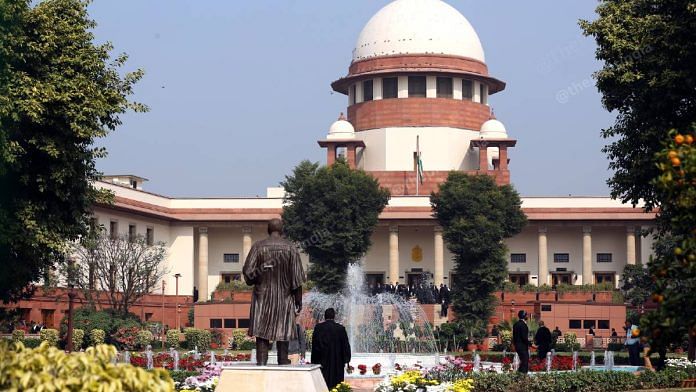New Delhi: Two separate benches of the Supreme Court Thursday remarked on the functioning of Enforcement Directorate (ED), the anti-money laundering agency that has in the recent past faced criticism from courts for arbitrary and excessive actions and accused by Opposition leaders of being a government tool to harass them.
While Chief Justice of India B.R. Gavai headed one bench, his successor Justice Surya Kant was presiding over the other. Incidentally, both the benches were hearing review petitions when the judges passed the remarks.
CJI Gavai’s court was hearing a review petition filed by various financial institutions to recall the top court’s May judgement that quashed the insolvency plan of Bhushan Steel and Power Limited and had ordered its liquidation. Justices Satish Chandra Sharma and Vinod Chandran were the other two judges with him.
Meanwhile, a set of review petitions against the SC’s July 2022 verdict upholding the sweeping powers of the ED under the Prevention of Money Laundering Act (PMLA) was being argued before Justice Kant’s bench, also comprising justices Ujjal Bhuyan and N Kotiswar Singh.
Amongst the two benches, the one led by Justice Kant made some strong observations, with Justice Bhuyan reminding the ED that it “cannot act like a crook and its conduct must be within the four corners of the law”.
The sharp rebuke came when Additional Solicitor General S.V. Raju opposed the review petitions, claiming they were not maintainable because they were, in effect, appeals disguised as review. To accept them would amount to rewriting the 2022 judgement, which cannot be permitted, he said.
As Raju continued with his arguments, Justice Bhuyan told him: “You cannot act like a crook. You have to work within the four corners of law. There is a difference between law-enforcing authorities and law-violating bodies.”
The judge then recollected one of his judgements in a case involving the ED. “See what I observed in one of the cases that came true in what a minister said in Parliament…After 5,000 cases, less than 10 convictions. We are equally concerned about the image of ED.”
Raju countered the judge’s opinion and explained that one of the reasons for the low conviction rate in PMLA cases is that the “rich and powerful use a powerful battery of lawyers and file so many applications”.
“They do not even allow the trial to take place and delay it,” the ASG told the bench.
In the Bhushan Steel case, CJI Gavai’s bench too questioned the low conviction rate in ED cases. It remarked that the agency has been able to keep accused in jail for years, even though they have failed to secure their conviction.
“…even if they are not convicted, you (ED) have been successful in sentencing them [accused] almost without a trial for years together,” the CJI remarked when he learnt that ED had a role to play in the Bhushan Steel case.
Solicitor General Tushar Mehta, who was appearing for the Committee of Creditors in the case, defended the ED and said that the agency had recovered more than Rs 2000 crore and distributed it to the victims.
“The matters which come to court are only high-profile matters, there are other matters also,” the solicitor told the bench.
When the CJI enquired from Mehta about the conviction rate, the latter replied: “Conviction is different. Sometimes we wonder how a person is acquitted. Sometimes we have recovered so much money that our machines stop working. We can’t give press interviews and YouTube discussions.”
CJI promptly responded to Mehta’s insinuation about social media’s possible influence on judges. “I don’t decide matters based on press reports,” he said.
Also Read: Under Modi govt, ED’s public profile has changed.






